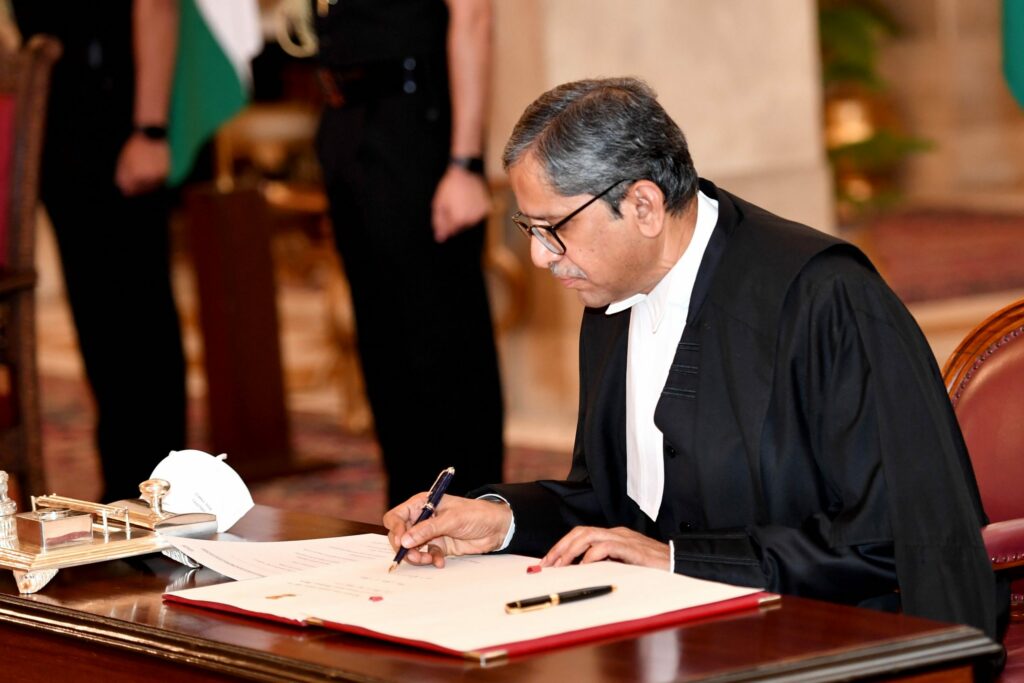Manas Dasgupta
NEW DELHI, Sept 2: The Supreme Court on Thursday came down heavily on a section of the media particularly some of the social media platform and web portals for spreading fake news and communalising issues earning the country a band name.
Leading the bench, the Chief Justice of India N.V. Ramana said certain sections of the media communalised everything and this would ultimately result in giving the country a bad name and expressed concern over fake news being spread over social media platforms and web portals stating that they exhibit no accountability.
The three-judge bench headed by the chief justice was hearing a batch of petitions, including the one filed by Jamiat Ulema-i-Hind, seeking directions to the Centre to stop the dissemination of “fake news”, which linked the spread of Covid-19 with the Tablighi Jammat gathering at the Markaz Nizamuddin in New Delhi last year and to take action against those responsible for it.
The bench noted that “web portals are not governed by anything. There is an attempt to give communal colour to news and that is the problem. It ultimately brings bad name to country.”
“The problem is, everything in this country is shown with a communal angle by a section of media. … The country is going to get a bad name ultimately,” Chief Justice Ramana observed orally.
The hearing witnessed Chief Justice Ramana upbraid the lack of accountability on the part of social media platforms. The CJI said social media platforms only responded to “powerful people,” while complaints made by ordinary people, institutions and judges over content were ignored.
“These web channels, Twitter, Facebook, YouTube… They never respond. There is no accountability. About the institution they write badly and then they do not respond… This is the condition of institutions, forget individuals… They consider only people who are powerful. Institutions, common man, judges, they do not… This is the reality,” Chief Justice Ramana noted.
“There is no control over fake news and slandering in web portals and YouTube channels. If you go to YouTube, you will find how fake news is freely circulated and anyone can start a channel on YouTube,” the bench remarked.
The court asked the government whether there was any regulatory mechanism in place for the web.
Solicitor-General Tushar Mehta drew the court’s attention to the Information Technology (Intermediary Guidelines and Digital Media Ethics Code) Rules, 2021, which provide a redressal mechanism and timely resolution of grievances of users of social media and over-the-top platforms. The Rules require these platforms to appoint a grievance redressal officer who is a resident of India.
The government recently asked the top court to transfer cases challenging the Information Technology Rules of 2021 from the various High Courts to the Supreme Court.
In the case of complaints against broadcasters, Mehta referred to the Cable Television Networks (Amendment) Rules of 2021. He submitted that the Rules provide for a three-level grievance redressal mechanism — self-regulation by broadcasters, self-regulation by the self-regulating bodies of the broadcasters, and oversight by an Inter-Departmental Committee at the level of the Central government.
“The real contest is between the freedom of the press and the right of citizens to get unadulterated news… We have tried to regulate, balance,” Mehta submitted.
On September 24, 2019, hearing a petition filed by Facebook, the top court had shown deep concern at the utilisation of social media for committing crime. It said the medium had become a source for pornography. Paedophiles use social media in a “big way”. Criminals exploit it to run weapons, drugs and contraband. Hate and violence were shared and spread through these virtual platforms. The court had even felt that some messages on social media may even threaten national sovereignty.
It was in this context the court had called for a “properly framed regime” to allow the government to get information about first originators of messages from “significant” social media intermediaries with end-to-end encryption technology like WhatsApp. The IT Rules of 2021 mention this order of the Supreme Court as one of the reasons to justify their existence.
The apex court allowed the petitioners to amend pleas seeking action against media for communalising Nizamuddin Markaz issue. The Centre’s plea seeking the transfer of all cases challenging the IT Rules in different high courts to the Supreme Court was also listed along with the same petition. The matter will be heard in six weeks.
————————

